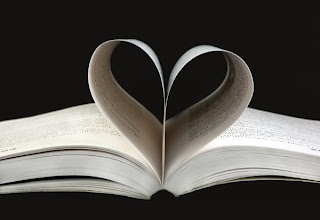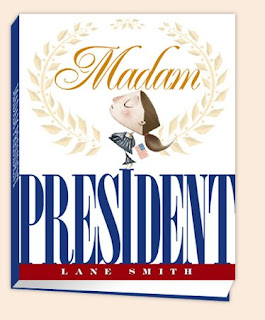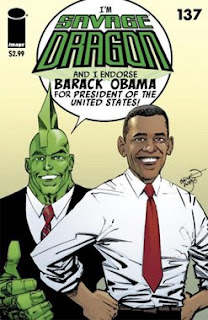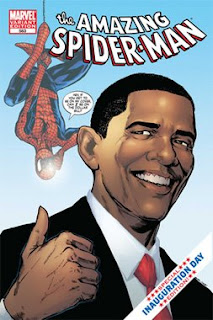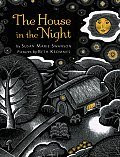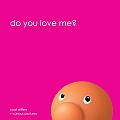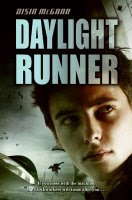By
Stacey Nerdin
Many recent events inspired the creation of this month’s column. The celebration of Martin Luther King Jr’s birthday, marked with a nationwide commitment to serve in our communities, seemed more significant than many years in recent memory. And just one day later, the historic Inauguration of our 44
th President - and the first African American ever sworn into the office - brought more than one million people to the nation’s capital, as well as countless others watching via television. And now it is February, celebrated as Black History Month since 1976 (with roots going back to the 1920’s and Black History Week). It feels as if a conversation commonly peppered with uncertainty or fear of misunderstanding is now being had on the national – if not world – stage: the nature, history, and future of race relations in America.
Caught up in the tide of this conversation, I decided for February to research the portrayal of African American families in fiction. Though my intentions were honest, it quickly became clear that my expectations were
naïve. What I discovered – and am embarrassed that I
hadn’t guessed – is that the field of African American literature is broad and vast, and professors teach 10-week courses on just the very theme I was aiming to briefly introduce here. So where I would have liked to present a gallery of portraits of African American families in fiction, I have chosen – for the sake of space (and clarity) - to examine just one snapshot, though a powerful snapshot it is.
It is referenced in numerous critical histories on African American literature as a significant and honest examination of the African American experience. One critic wrote that it “typifies American society in a way that reflects more accurately the real lives of the black U.S. majority than any work that ever received commercial exposure before it, and few if any since” (
Baraka 9). Built around a black family living in a
Southside Chicago ghetto, the work we’ll look at this month is Lorraine
Hansberry’s play,
A Raisin in the Sun.A
Raisin in the Sun opened on Broadway in 1959 to immediate commercial and critical praise. The first play by an African American woman ever to be produced on Broadway, it went on to win the Best Play of the Year award from the New York Drama Critics. Though playwright
Hansberry was somewhat surprised by the play’s success, she was sure of its significance. "’The intimacy of knowledge which the Negro may culturally have of white Americans,’ she once said, ‘does not exist in the reverse’” (NPR).
The intimate story
Hansberry tells is of the Younger family – matriarch Lena, her son Walter and his wife Ruth and son Travis, and Walter’s sister
Beneatha. They live all together in a cramped, bug-infested tenement building in Chicago’s
Southside. They have only one grimy window for natural light, and must share a hall bathroom with another family in their building. With the noisy bark of the alarm clock that begins the first scene,
Hansberry communicates to us that this is a family in discord.
Indeed, it takes only moments for Walter and Ruth to begin arguing. After exchanging some short words with one another, Walter confronts Ruth: “You tired,
ain’t you? Tired of everything. Me, the boy, the way we live – this beat-up hole – everything.
Ain’t you?” (
Hansberry 32). And she is. But then so is Walter. “This morning, I was
lookin’ in the mirror and thinking about it…I’m thirty-five years old; I been married eleven years and I got a boy who sleeps in the living room – and all I got to give him is stories about how rich white people live...” (
Hansberry 34).
Where Ruth is tired, Walter is energized – energized by a complicated plan to put himself on par with the successful white man he drives for as a chauffeur. Walter’s scheme depends on the investment of his father’s $10,000 life insurance check, a check just made out and mailed to his mother, Lena. Walter pleads with his mother for the money: “Sometimes it’s like I see the future stretched out in front of me – just plain as day. The future, Mama. Hanging over there at the edge of my days. Just waiting for me – a big, looming blank space – full of nothing. Just waiting for me. But it don’t have to be” (
Hansberry 73-74).
Walter is not the only one with big dreams; his sister
Beneatha attends school in hopes of becoming a doctor. She differs from Walter in her social aspirations, however, because it is not her goal to become as successful as whites, but to become successful as an African American. Throughout the play she grows in her enthusiasm for her African roots, declaring to her family and middle-class African American friend: “I hate
assimilationist Negroes!” (
Hansberry 81). She defines this for Ruth: “It means someone who is willing to give up his own culture and submerge himself completely in the dominant, and in the case oppressive culture!” (
Hansberry 81).
Walter’s and
Beneatha’s dreams are complicated by their place in society as marginalized members of the black race. Critic Jordan Y. Miller wrote, “Lorraine
Hansberry has presented one of the most volatile of our society’s problems, telling it precisely ‘like it is’ … The play is a problem play, and the problem is blackness in a white society” (Miller 167-168). In terms of examining the theme of dreams in
A Raisin in the Sun, it is important to understand the title of the play, which comes from Langston Hughes’ poem A Dream Deferred. A portion of the poem’s text reads, “What happens to a dream deferred? Does it dry up, like a
raisin in the sun … Or does it explode?” Critic Anne Cheney wrote, “This epithet suggests the tensions and frustrations of the black man's, as well as the black woman's, existence. The central images of
Hughes's poem--
raisins, sores, rotten meat, crusted sugar--are images of inevitable decay if dreams are deferred” (Cheney). If given the choice between drying up or exploding from the deferment of dreams, it would seem at several points of
A Raisin in the Sun that the Younger family is about to explode.
Confused by her children’s pronounced anxiety and restlessness, and what she believes is the rapid disintegration of her family, Lena Younger decides to use her husband’s life insurance money to purchase a new home for all of them – someplace they can have room, and light, and a small garden. “It’s just a plain little old house – but it’s made good and solid – and it will be ours. Walter Lee – it makes a difference in a man when he can walk on floors that belong to him…” (
Hansberry 92). To her family’s surprise, however, Lena reveals that the home is located in an all-white subdivision of the city. This, coupled with a tragic turn of events with Walter and his poor investments, leads to the climax of the story, where the
Youngers must gather their collective strength to face an uncertain future.
Dr.
Judylyn Ryan, an Associate Professor of English specializing in African American literature at Ohio Wesleyan University, pointed to this familial unity as the most representative characteristic of the African American family in
A Raisin in the Sun. She wrote to me via email recently: “I would agree that [
Hanberry’s play] is one of the best literary representations of the African American family, not because it provides a prototypical exploration of the conflicts and challenges confronting the family but because of its focus on the extended family relationships and
intergenerational transfers of psychological and ethical resources that enable the family to survive” (Ryan). The “
intergenerational transfers of psychological and ethical resources” Ryan mentions refer to the character of Mama Lena.
When daughter
Beneatha angrily reveals, “God is just one idea I don’t accept … There simply is no blasted God – there is only man and it is he who makes miracles!” (
Hansberry 51), Mama Lena is quick to establish a standard of reverence in her home. After slapping
Beneatha for her blasphemy, Mama tells her, “Now – you say after me, in my mother’s house there is still God” (
Hansberry 51). Mama finds herself setting Walter straight, too, though on matters more temporal than spiritual. In response to his pleading with her for his father’s life insurance money, she tells him, “In my time we was worried about not being lynched and getting to the North if we could and how to stay alive and still have a pinch of dignity, too … You
ain’t satisfied or proud of nothing we done” (
Hansberry 74).
Following this line of
intergenerational relationships in African American literature, Dr. Ryan referenced an article by Toni Morrison entitled “City Limits, Village Values.” Dr. Ryan explained that in the article, “Morrison defines the ancestor as a ‘timeless’ sort of figure whose relationship to other (younger) characters is ‘wise, benevolent, counseling.’ In essence, Morrison’s discussion of the role of the ancestor offers another framework for assessing literary representations of the Black family” (Ryan). And this is certainly true in assessing the portrait of Mama Lena’s character and her family in A
Raisin in the Sun.
2009 marks 50 years since the first production of Lorraine
Hansberry’s
A Raisin in the Sun. Though decades have passed, it remains a truly relevant commentary on social conditions and the cultural strength of African American families, both in 1959 and today. It also remains relevant for the message available to all audiences. With her play,
Hansberry achieved the great feat of being able to focus specifically on the African American experience, while allowing audiences of all races to see the underlying humanity of the play’s themes. “
A Raisin in the Sun is a quiet celebration of the black family…the survival of the individual, and the nature of man's dreams. … the simple eloquence of the characters elevates the play into a universal representation of all people's hopes, fears, and dreams” (Cheney).
SOURCES:
Baraka,
Amiri, 'A
Raisin in the Sun's' Enduring Passion, in 'A
Raisin in the Sun'; and The Sign in Sidney
Brustein's Window, by Lorraine
Hansberry, edited by Robert
Nemiroff, New American Library, 1987, pp. 9-20.
Cheney, Anne, "Lorraine
Hansberry", In
Twayne's United States Authors Series Online New York: G. K. Hall & Co., 1999. Previously published in print in 1984 by
Twayne Publishers.
Hansberry, Lorraine, A
Raisin in the Sun. New York: Vintage Books, 1988.
Miller, Jordan, Lorraine
Hansberry, in The Black American Writer: Poetry and Drama, Vol. II, edited by C.W.E.
Bigsby, Everett/ Edwards, Inc., 1969, pp. 157 70.
NPR: A
Raisin in the Sun, Present at the Creation.
http://www.npr.org/programs/morning/features/patc/
raisin/?sc=emaf
Ryan, Dr.
Judylyn, Associate Professor of English at Ohio Wesleyan University, personal email to Stacey
Nerdin in response to request for expert opinion.
